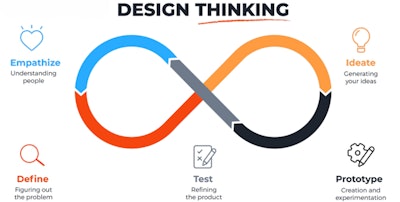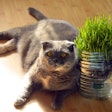
While pet food is a dynamic industry, with its growth continually spurred by new product development, industry experts sometimes lament the lack of truly innovative new products — ones that are not merely line extensions or “me too” products.
Yet saying the industry needs to be more innovative is easy; actually innovating and developing completely new pet foods and treats (or perhaps an entirely different format) is not so straightforward. Could it be? Tips from two experts may provide a roadmap for pet food product developers to innovate.
3 hacks for fostering innovation
“Innovation is thinking differently about what’s right in front of you to create an advantage,” said Tamara Ghandour, founder of LaunchStreet and the May 1 opening speaker at Petfood Forum 2024 in Kansas City, Missouri, USA. “It’s really just taking what you have and putting a fresh, new light on it.”
That may also seem easier said than done, but Ghandour did share three “hacks” for achieving innovation:
- Ask inciting questions. “Questions in are answers out,” she explained. In other words, you need to ask different types of questions to “stir the pot” and get people thinking in that fresh, different way.
- Get past internal resistors to change. “People don’t fear change, they fear being changed,” Ghandour said. To get around this fear, say something like, “tell me more.”
- To foster innovation and collaborate around it, be careful not to kill it during the brainstorming and development processes. One word can do that: “but.” Ghandour suggests using “and” instead.
Models for design thinking, generating new product ideas
During his opening session for Petfood Forum Europe 2024 on May 6 in Nuremberg, Germany, David Molenberghs, co-founder and chief innovation officer for a pet snack company called Smoofl, presented his way of design thinking and offered tips for others in the industry to be more innovative.
Of all the many design models and concepts available, he said the most helpful one for him (from Maqe) is based on a constant iteration — expressed by the infinity symbol — of five steps:
- Empathize. Understand people, especially your target market.
- Define. Figure out the problem you’re trying to solve.
- Ideate. Generate new ideas, relying on both internal and external sources.
- Test. To refine the idea.
- Prototype. Create and experiment with the idea, perhaps using technology like 3D printing.
Based on market feedback, you may need to repeat this process, not only for the initial idea but even for products already commercially available to ensure they continue to succeed.
Molenberghs also shared a mnemonic for ways to generate new ideas: SCAMPER. These include Substitute, Combine, Adapt, Modify, Put to another use, Eliminate (perhaps simplify) and Reverse.
To quickly narrow down the ideas, he suggested applying the three concepts of product design: viability (market potential), feasibility and desirability. Or, maybe a better way to think about and use the concepts is to rename them as head, heart and mouth. This can also help you tell a good story about the product once it’s developed.


















